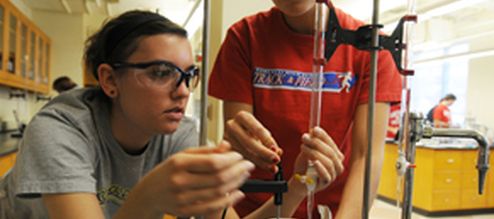Document Type
Article
Publication Date
2-2008
Publication Source
Journal of Molecular Structure: THEOCHEM
Abstract
The current report presents the first theoretical study of the restricted CN bond rotation in carbamoyl chlorides. Several N-benzyl-N-methylcarbamoyl chlorides were investigated, with varying pattern of substitution in the aromatic ring. Optimizations and frequency calculations were conducted employing DFT at the B3LYP/6-31+G(d) level of theory. Each of the studied structures exhibits a pair of rotamers (s-Z and s-E), generated upon rotation around the C(O)N bond. The s-E isomer is the global minimum in every case, but the preference for it is usually less than 1 kcal/mol. Two possible transition state structures were identified for the rotamer interconversion: TSsyn and TSanti, in close analogy to other related compounds, such as amides and carbamates. In contrast to the two latter types, however, the preferred transition state in the case of carbamoyl chlorides is TSsyn, which we attribute to a stabilizing gauche effect. The optimized minima structures of the studied carbamoyl chlorides were subjected to GIAOB3LYP/6-311+G(2d,p) calculations, and the resultant isotropic shifts were found to be in excellent agreement with available experimental values. This has allowed us to provide unambiguous NMR signal assignments for the s-E and s-Z isomers of the studied compounds.
Inclusive pages
105-110
ISBN/ISSN
0022-2860
Document Version
Postprint
Copyright
Copyright © 2008, Elsevier
Publisher
Elsevier
Volume
850
Peer Reviewed
yes
Issue
1-3
eCommons Citation
Horwath, Michael and Benin, Vladimir, "C–N bond rotation and E–Z isomerism in some N-benzyl-N-methylcarbamoyl chlorides: A DFT study" (2008). Chemistry Faculty Publications. 2.
https://ecommons.udayton.edu/chm_fac_pub/2
Included in
Analytical Chemistry Commons, Biochemical Phenomena, Metabolism, and Nutrition Commons, Chemical and Pharmacologic Phenomena Commons, Environmental Chemistry Commons, Inorganic Chemistry Commons, Materials Chemistry Commons, Medical Biochemistry Commons, Medicinal-Pharmaceutical Chemistry Commons, Organic Chemistry Commons, Other Chemistry Commons, Physical Chemistry Commons




Comments
The document available for download is the authors' accepted manuscript, posted here in compliance with the publisher's policy on self-archiving.
Some differences may exist between this version and the publisher's version; as such, researchers wishing to quote directly from it are advised to consult the version of record, available at many libraries or from the publisher.
Permission documentation is on file.